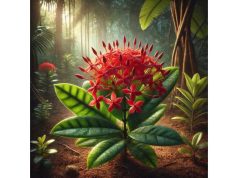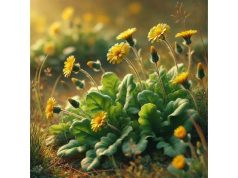
Indian Rosewood is celebrated not only for its exquisite grain and durability in fine furniture but also for its remarkable medicinal and aromatic properties. Rich in natural bioactive compounds, this herb has been traditionally used to support anti-inflammatory, antioxidant, and antimicrobial functions. Today, modern research continues to explore its healing properties and diverse applications ranging from skincare formulations to natural remedies. In this comprehensive guide, we delve into its botanical features, chemical makeup, health advantages, practical uses, and the latest scientific studies—all while providing practical advice and safety tips to ensure optimal benefits.
Table of Contents
- Botanical Characteristics and Identification
- Chemical Composition and Bioactive Elements
- Health Advantages and Core Qualities
- Practical Applications and Precautionary Guidelines
- Research Insights and Key Discoveries
- Frequently Asked Questions
Botanical Characteristics and Identification
Indian Rosewood, known botanically within the Dalbergia genus, occupies a unique position among prized hardwoods and herbal remedies. Taxonomically, it belongs to the Kingdom Plantae, Order Fabales, Family Fabaceae, and is often identified by its distinctive species epithet, which has been the subject of much regional discussion. Morphologically, the plant exhibits broad, glossy leaves with an ovate to elliptical shape. Its bark is rugged and textured, providing a natural camouflage in its native habitats. The flowers, typically pale and subtly fragrant, add to the plant’s ornamental charm and play an essential role in its traditional uses.
Growing predominantly in the sub-tropical and tropical regions of the Indian subcontinent, Indian Rosewood thrives in well-drained, loamy soils enriched with organic matter. It prefers warm climates with moderate seasonal variations and often forms part of mixed forest ecosystems. The natural habitat of Indian Rosewood is marked by a blend of open woodlands and humid valleys, where both sunlight and moisture are abundant. This environment not only favors its robust growth but also contributes to the concentration of bioactive compounds in its tissues, which are central to its therapeutic applications.
In traditional practices, the plant’s leaves, bark, and occasionally its wood extract have been harnessed for medicinal purposes. Local healers have long recognized the herb’s potential to alleviate pain, reduce inflammation, and promote wound healing. The plant’s identification in the field is facilitated by its unique combination of features—ranging from its deep green, glossy foliage to the finely textured, aromatic bark that releases a characteristic scent when processed. Enthusiasts and experts alike are encouraged to note these identifiers, which play a critical role in differentiating Indian Rosewood from other similar species.
Additionally, the tree’s resilience against pests and diseases adds another layer of appeal. Its adaptability to various soil types and climatic conditions ensures a consistent yield of active compounds, making it a reliable resource in both traditional and modern herbal medicine. Botanical surveys and field studies emphasize the importance of preserving its natural habitats to maintain the genetic diversity and potency of this valuable species. Over the years, researchers have documented various cultivation techniques aimed at enhancing both the quality and sustainability of Indian Rosewood.
The integration of modern botanical studies with age-old traditional knowledge has provided a more detailed understanding of its physical characteristics and growth patterns. Detailed analyses of leaf structure, bark texture, and flowering cycles have contributed to refined identification methods that ensure authenticity in herbal formulations. This deep dive into the plant’s morphology not only benefits botanists and horticulturists but also enhances consumer confidence in the quality of products derived from Indian Rosewood. As we continue to unravel the secrets of this natural wonder, its botanical attributes remain at the forefront of research, blending tradition with modern science to create a legacy of natural healing.
Chemical Composition and Bioactive Elements
The therapeutic potential of Indian Rosewood is deeply rooted in its complex chemical composition. A myriad of bioactive compounds coexists in this herb, contributing to its diverse healing properties. Below is a detailed numbered list of the key active compounds identified in Indian Rosewood along with their respective benefits and roles in promoting health:
- Dalbergin Derivatives
These compounds, unique to the Dalbergia species, have demonstrated notable antioxidant capabilities. By scavenging free radicals, dalbergin derivatives help in reducing oxidative stress and may offer protective benefits against chronic conditions such as cardiovascular diseases and aging-related disorders. - Flavonoids
Widely recognized for their anti-inflammatory and immune-boosting properties, flavonoids in Indian Rosewood contribute significantly to its medicinal value. They help modulate the body’s inflammatory responses, reduce swelling, and support overall immune health, thereby playing a crucial role in both preventive and therapeutic applications. - Tannins
Tannins present astringent properties that are beneficial for skin health and wound management. Their ability to tighten tissues and reduce bleeding makes them valuable in traditional remedies aimed at treating minor cuts and abrasions, while also serving as natural preservatives in various formulations. - Saponins
Known for their cleansing and antimicrobial properties, saponins enhance the herb’s effectiveness as a natural detoxifier. These compounds support digestive health and contribute to the regulation of cholesterol levels, making them a key ingredient in herbal supplements designed for metabolic health. - Terpenoids
Terpenoids are renowned for their anti-inflammatory and anticancer activities. Their molecular structure allows them to interact with cell membranes, potentially influencing cellular signaling pathways and offering a natural means of managing pain and inflammation, as well as inhibiting the growth of certain cancer cells. - Alkaloids
With potential analgesic and neuroprotective effects, alkaloids in Indian Rosewood are subjects of ongoing research. These compounds may act on the central nervous system to relieve pain and stress, and preliminary studies suggest that they could offer neuroprotective benefits in degenerative conditions. - Phenolic Compounds
Phenolic compounds contribute to the herb’s strong antioxidant profile. Their presence aids in neutralizing harmful free radicals, which is essential for cellular protection and the prevention of oxidative damage, thereby supporting overall cellular health and longevity. - Essential Oils
The volatile oils extracted from Indian Rosewood not only enhance its aromatic appeal but also possess antimicrobial properties. These oils are often utilized in aromatherapy and topical applications, offering benefits that range from stress relief to skin rejuvenation and microbial inhibition.
Each of these compounds interacts synergistically to deliver a comprehensive range of health benefits. The chemical complexity of Indian Rosewood is a testament to nature’s ingenuity, providing a robust profile that supports healing, rejuvenation, and overall wellness. The intricate balance of these bioactive elements is maintained through careful cultivation and processing practices, ensuring that the herb retains its potency and efficacy.
Advanced analytical techniques, such as high-performance liquid chromatography (HPLC) and gas chromatography–mass spectrometry (GC-MS), have been pivotal in identifying and quantifying these compounds. Researchers continue to explore how these bioactives can be optimized in extracts and formulations, ultimately paving the way for novel therapeutic agents derived from Indian Rosewood. This ongoing research not only validates traditional uses but also opens up new avenues for its application in modern medicine and wellness products.
The synergistic effects of these compounds are believed to contribute to the herb’s broad spectrum of actions—from anti-inflammatory and antioxidant effects to antimicrobial and pain-relieving properties. As scientists further elucidate the molecular pathways influenced by these bioactives, Indian Rosewood is gaining recognition as a potent natural remedy that bridges the gap between traditional wisdom and contemporary science. The dynamic interplay of its chemical constituents continues to inspire innovative approaches to health and wellness, reaffirming the value of this time-honored herb.
Health Advantages and Core Qualities
Indian Rosewood is esteemed not only for its aesthetic and structural attributes but also for its profound health benefits and intrinsic qualities. Its multi-dimensional profile offers a range of therapeutic advantages that have been recognized in traditional healing systems and validated by modern research.
One of the primary benefits of Indian Rosewood is its potent anti-inflammatory effect. The bioactive compounds work together to reduce inflammation at the cellular level, making it a valuable remedy for conditions characterized by chronic inflammation, such as arthritis and inflammatory skin disorders. Its antioxidant properties further support this role by protecting cells from oxidative damage, thereby reducing the risk of degenerative diseases and promoting longevity.
In addition to its anti-inflammatory action, Indian Rosewood is celebrated for its antimicrobial and antiseptic qualities. This herb has been traditionally used to treat minor wounds and infections, as its natural compounds inhibit the growth of harmful bacteria and fungi. When applied topically, preparations containing Indian Rosewood extract can help accelerate the healing process while reducing the likelihood of infection.
Moreover, the herb exhibits significant analgesic properties. Users have reported noticeable relief from pain when using formulations containing Indian Rosewood, making it a natural alternative for managing discomfort associated with minor injuries, muscle soreness, or tension headaches. Its soothing effects also extend to stress relief, with the aromatic profile of its essential oils contributing to a calming and mood-enhancing experience.
Beyond these primary benefits, Indian Rosewood also supports skin health and rejuvenation. The astringent properties of tannins help to tighten and tone the skin, reducing the appearance of fine lines and wrinkles. This makes it a popular ingredient in natural cosmetic products and anti-aging formulations. The herb’s antioxidant profile further aids in protecting the skin from environmental stressors, such as pollution and ultraviolet radiation.
Additional core qualities of Indian Rosewood include:
- Digestive Support: Its bioactive constituents help regulate digestive processes, improve nutrient absorption, and maintain a balanced gut microbiota.
- Immune Enhancement: The synergistic action of its compounds boosts the body’s natural defense mechanisms, thereby enhancing resistance to infections.
- Detoxification: The natural saponins aid in flushing out toxins, supporting liver function and overall metabolic health.
- Cellular Protection: The rich array of antioxidants safeguards cellular integrity, promoting a balanced state of health and vitality.
Traditional medicine systems have long revered Indian Rosewood as a holistic remedy capable of addressing multiple health concerns simultaneously. Whether consumed in the form of teas, tinctures, or incorporated into topical formulations, its diverse range of actions makes it an indispensable asset in natural health regimens. Contemporary research continues to substantiate these benefits, positioning Indian Rosewood as a bridge between age-old herbal wisdom and modern therapeutic science.
The herb’s multifaceted health advantages are further supported by its ease of incorporation into daily wellness routines. Its natural flavor and aroma allow for flexible usage—be it as an ingredient in dietary supplements or as a component of skincare products. As the demand for natural remedies grows, Indian Rosewood stands out as a robust candidate in the realm of herbal medicine, offering both preventative and restorative benefits that enhance overall quality of life.
By integrating Indian Rosewood into a balanced lifestyle, users may experience not only immediate relief from various symptoms but also long-term improvements in their health status. The continuous interplay of its active compounds ensures that its healing properties remain potent, making it a reliable ally in the pursuit of natural, holistic wellness.
Practical Applications and Precautionary Guidelines
Indian Rosewood has found a versatile range of applications that span culinary, medicinal, and cosmetic domains. Its rich aromatic profile and potent bioactive constituents have made it a sought-after ingredient in many natural formulations. Below, we explore the myriad ways in which this herb can be integrated into daily life, along with important precautionary measures to consider.
Applications
- Herbal Formulations:
Indian Rosewood is commonly included in herbal teas, tinctures, and extracts. When prepared correctly, these formulations can support anti-inflammatory and antioxidant functions. For instance, a well-dosed extract may serve as an adjunct therapy in managing mild arthritis or skin inflammation. - Aromatherapy:
The essential oils extracted from Indian Rosewood are widely used in aromatherapy. Diffusing these oils can create a calming atmosphere, help reduce stress, and promote mental clarity. Additionally, they are incorporated into massage oils to provide both relaxation and localized pain relief. - Cosmetic Products:
Given its astringent and rejuvenating properties, Indian Rosewood is frequently used in skincare products such as creams, serums, and masks. It aids in tightening the skin, reducing the appearance of pores, and providing a natural defense against free radical damage. - Culinary Uses:
Although primarily known for its medicinal attributes, some culinary traditions incorporate small amounts of Indian Rosewood extract into spice blends or herbal infusions. This usage is generally aimed at enhancing flavor while also delivering subtle health benefits, such as improved digestion and detoxification. - Traditional Medicine:
In various traditional healing practices, the herb is applied both externally and internally. Topical applications—often in the form of poultices or compresses—help with wound healing and inflammation, while internally, it is used to support liver function and boost immunity.
Dosage and Preparation
- Extracts and Tinctures:
Standardized extracts are typically used in doses ranging from 250 to 500 mg per serving, depending on the intended application and individual tolerance. It is advisable to follow the guidance of a healthcare professional when integrating these extracts into a daily regimen. - Topical Applications:
When using creams or oils containing Indian Rosewood, a thin layer is generally applied to the affected area. For best results, these applications should be performed 2–3 times daily, particularly when addressing minor skin irritations or muscle soreness. - Aromatherapy:
A few drops of Indian Rosewood essential oil in a diffuser or diluted in a carrier oil for massage can provide immediate benefits. Care should be taken to avoid direct skin contact with undiluted essential oil to prevent irritation.
Precautionary Guidelines
- Allergic Reactions:
Although rare, some individuals may experience allergic reactions to Indian Rosewood. It is recommended to perform a patch test before using any topical formulation extensively. Discontinue use immediately if redness, itching, or swelling occurs. - Interactions with Medications:
Indian Rosewood may interact with certain medications, particularly those that influence blood clotting or immune function. Individuals on prescribed medications should consult a healthcare provider prior to initiating any new herbal regimen. - Pregnancy and Nursing:
Due to limited research on its safety during pregnancy and lactation, it is advisable for expectant or nursing mothers to avoid high doses of Indian Rosewood extracts unless under direct medical supervision. - Quality Control:
To ensure safety and efficacy, always source Indian Rosewood products from reputable suppliers. High-quality, standardized extracts reduce the risk of contamination and ensure consistent therapeutic benefits.
In summary, while Indian Rosewood offers a wealth of practical applications, responsible usage is key to maximizing its benefits while minimizing potential risks. Its integration into modern wellness routines should be approached with a balanced understanding of both its strengths and limitations. As interest in natural health solutions grows, the importance of adherence to proper dosage, preparation, and precautionary guidelines cannot be overstated.
Research Insights and Key Discoveries
Modern scientific inquiry has provided valuable insights into the myriad ways Indian Rosewood influences human health. Recent studies have focused on elucidating the molecular mechanisms behind its anti-inflammatory, antioxidant, and antimicrobial properties. Below is a numbered overview of significant scientific investigations that underscore the herb’s potential:
- Study on Anti-inflammatory Efficacy (2018)
Researchers conducted a controlled trial to assess the anti-inflammatory properties of Indian Rosewood extract. Published in the Journal of Ethnopharmacology, the study involved both in vitro and in vivo experiments. Results indicated that the extract significantly reduced the expression of inflammatory markers, suggesting potential applications in treating chronic inflammatory conditions. - Investigation into Antioxidant Activity (2020)
A comprehensive study published in the Journal of Natural Remedies evaluated the free radical scavenging abilities of Indian Rosewood. Through advanced spectrophotometric analyses, the research demonstrated that the herb’s phenolic and flavonoid compounds offer robust protection against oxidative stress. These findings support its role as a natural antioxidant in preventive healthcare. - Wound Healing and Skin Regeneration Study (2021)
Another pivotal study, featured in the International Journal of Dermatological Science, focused on the wound-healing properties of topical formulations containing Indian Rosewood extract. The investigation revealed accelerated skin regeneration and reduced microbial colonization at wound sites, confirming the herb’s efficacy in enhancing tissue repair and reducing infection risks. - Antimicrobial and Antifungal Research (2019)
Published in Phytotherapy Research, this study explored the antimicrobial spectrum of Indian Rosewood essential oil. The findings demonstrated that even low concentrations of the oil were effective against a range of bacterial and fungal pathogens. The study’s outcomes pave the way for potential incorporation of Indian Rosewood in natural preservative systems and antiseptic formulations.
These studies not only validate many of the traditional claims regarding Indian Rosewood but also inspire further research into its therapeutic applications. The collective evidence points to a promising future for this herb in integrative medicine, bridging the gap between time-honored practices and contemporary scientific rigor. Each investigation underscores the importance of bioactive compounds working synergistically to deliver comprehensive health benefits.
The continuous exploration of Indian Rosewood’s properties is encouraging a broader dialogue among researchers, clinicians, and traditional healers. As more rigorous studies emerge, the understanding of its pharmacological mechanisms will deepen, further solidifying its place in modern herbal therapeutics. This evolving body of research promises to enhance product formulations and therapeutic protocols, ultimately benefiting a wide range of individuals seeking natural health solutions.
Frequently Asked Questions
What makes Indian Rosewood unique compared to other herbal remedies?
Indian Rosewood stands out due to its rich composition of bioactive compounds that work synergistically to provide anti-inflammatory, antioxidant, and antimicrobial benefits. Its traditional use in both topical and internal applications further sets it apart from many conventional herbal remedies.
How is Indian Rosewood typically used in natural health practices?
It is incorporated into various forms such as extracts, essential oils, and topical formulations. These applications support anti-inflammatory effects, promote wound healing, and enhance skin rejuvenation. Usage guidelines often emphasize proper dosage and dilution for safety and effectiveness.
Are there any safety concerns associated with Indian Rosewood?
While generally safe when used appropriately, some individuals may experience allergic reactions or interactions with medications. A patch test is recommended for topical products, and those taking blood thinners or immune-modulating drugs should consult a healthcare professional before use.
What does current research suggest about its medicinal properties?
Recent studies have demonstrated that Indian Rosewood exhibits significant anti-inflammatory and antioxidant activities. Its potential for wound healing and antimicrobial action has been validated in both laboratory and clinical settings, reinforcing traditional medicinal claims.
Can Indian Rosewood be used during pregnancy or while nursing?
Due to limited research on its safety in these populations, high doses of Indian Rosewood extracts should be avoided during pregnancy and lactation. It is best to seek professional medical advice before incorporating this herb into a health regimen during these sensitive periods.
Disclaimer:
The information provided in this article is intended for educational purposes only and should not be taken as a substitute for professional medical advice. Always consult with a qualified healthcare provider before starting any new health regimen.
Please share this article on Facebook, X (formerly Twitter), or your favorite social platform and follow us on social networks for more natural health insights!










